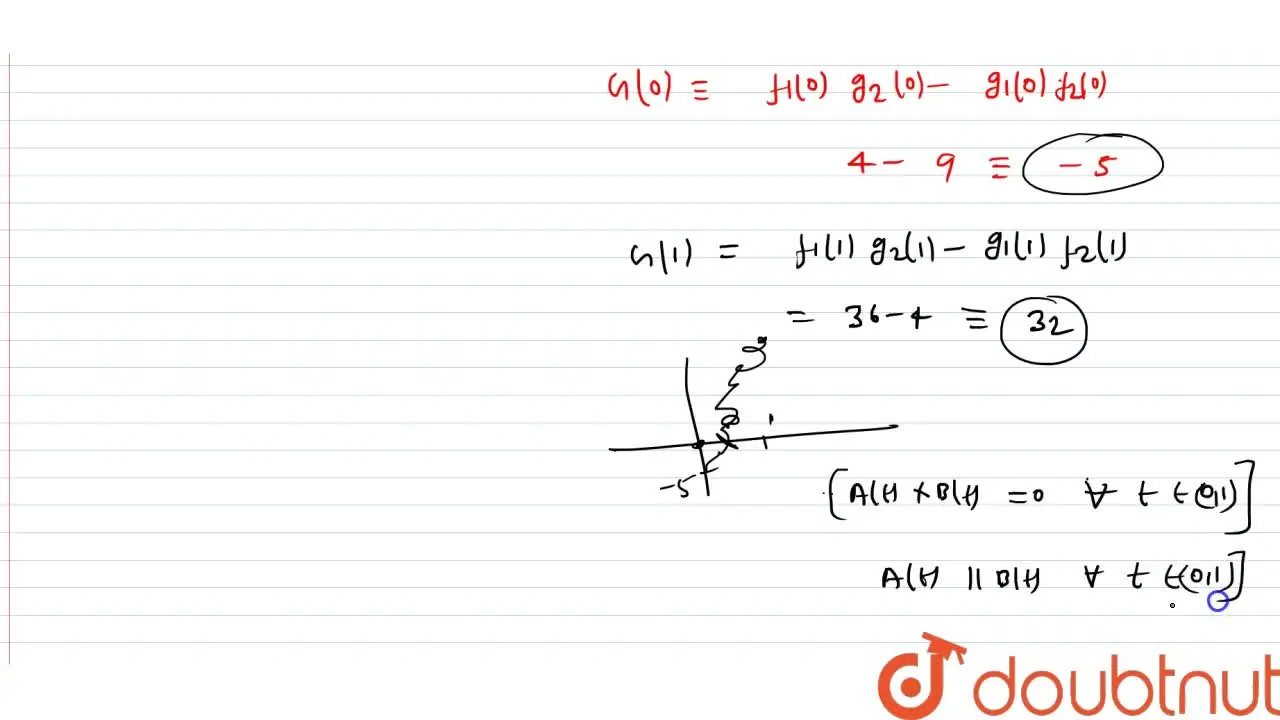Let A(t)=f1(t)→i+f2(t)→jand→B(t)=g1(t)→i+g2(t)→j,tε[0,1]wheref1,f2,g1,g2 are continuous functions. If →A(t)and→B(t) are non zero for all tε[0,1]and→A(0)=2→i+3→j,→A(1)=6→i=2→j,→B(0)=3→i+2→jand→B(1)=2→i+6→j prove that →A(t)and→B(t) are parallel for some tε(0,1)
Step by step video & image solution for Let A(t)=f_1(t)veci+f_2(t)vecj and vecB(t)=g_1(t)veci+g_2(t)vecj, tepsilon[0,1] where f_1,f_2,g_1,g_2 are continuous functions. If vecA (t) and vecB(t) are non zero for all tepsilon [0,1] and vecA(0)=2veci+3vecj, vecA(1)=6veci=2vecj, vecB(0)=3veci+2vecj and vecB(1)=2veci+6vecj prove that vecA(t) and vecB(t) are parallel for some tepsilon(0,1) by Maths experts to help you in doubts & scoring excellent marks in Class 12 exams.
Similar Questions
If →A=2→i−3→j+7→k,→B=→i+2→kand→C=→j−→k find →A.(→B×→C).
View SolutionIf →A=2→i+→j−3→k→B=→i−2→j+→kand→C=−→i+→j−→4k find →A×(→B×→C)
View SolutionIf →A=2→i+3→j+4→kand→B=4→i+3→j+2→k,f∈d→A×→B.
View SolutionLet →a=→i−→k,→b=x→i+→j+(1−x)→kand→c=y→i+x→j+(1+x−y)→k. Then →a,→band→c are non-coplanar for
View SolutionIF →a=2→i+3→j+4→kand→b=4→i+3→j+2→k find the angle between →aand→b.
View SolutionIf →a=2→i+3→j and →b=→i+→j, find (i)→a.→b, (ii)→a×→b and (iii)→b×→a
View SolutionLet →A=5→i−4→jand→B=−7.5→i+6→j. Do we have →B=k→A? Can we say →B→A=k?
View SolutionCalculate the angle between the vectors
→a=3→i+2→jand→b=2→i+→jView SolutionIf →a=→i−2→j+→k,→b=→i+→j+→kand→c=→i+2→j+→k then show that →a.(→b×→c)=(→a×→b).→c.
View SolutionIf →a=→i+→j+→k,→a.→b=1and→a×→b=→j−→k, then →b equals
View Solution


